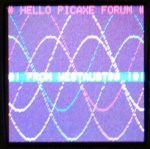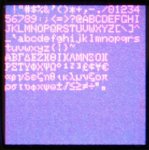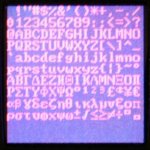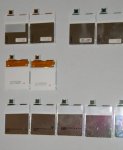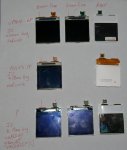westaust55
Moderator
I have now started on a new path with old mobile phone gLCD modules.
Past work has been based on monochrome displays but having been given a handful of faulty Nokia 6610 mobile phones I have started to interface and do some programming with these. One had a corroded LCD connector and a couple of others are suspect but some have working LCD modules).
The display is 128 x 128 RGB with 4096 colours and a 256 colour mode as well.
The connectors are very small and in reality little chance of soldering direct to the connector so some form of breakout board is essential. In my case, and as presented in the attached first part of the guide, I used the actual Nokia board after removing all but some essential components and a couple of larger ICs.
I have a commenced some programming and have displays with the Epson (green flexible circuit to connector) working but am still at this moment experimenting with set up parameters to determine the best setting.
There is some code out there on the Internet via Sparkfun and other websites for AVR micros and written in C but I have found the setting not to match the controller chip datasheets requirements.
More will follow later.
Past work has been based on monochrome displays but having been given a handful of faulty Nokia 6610 mobile phones I have started to interface and do some programming with these. One had a corroded LCD connector and a couple of others are suspect but some have working LCD modules).
The display is 128 x 128 RGB with 4096 colours and a 256 colour mode as well.
The connectors are very small and in reality little chance of soldering direct to the connector so some form of breakout board is essential. In my case, and as presented in the attached first part of the guide, I used the actual Nokia board after removing all but some essential components and a couple of larger ICs.
I have a commenced some programming and have displays with the Epson (green flexible circuit to connector) working but am still at this moment experimenting with set up parameters to determine the best setting.
There is some code out there on the Internet via Sparkfun and other websites for AVR micros and written in C but I have found the setting not to match the controller chip datasheets requirements.
More will follow later.
Attachments
-
821.5 KB Views: 168
Last edited:

